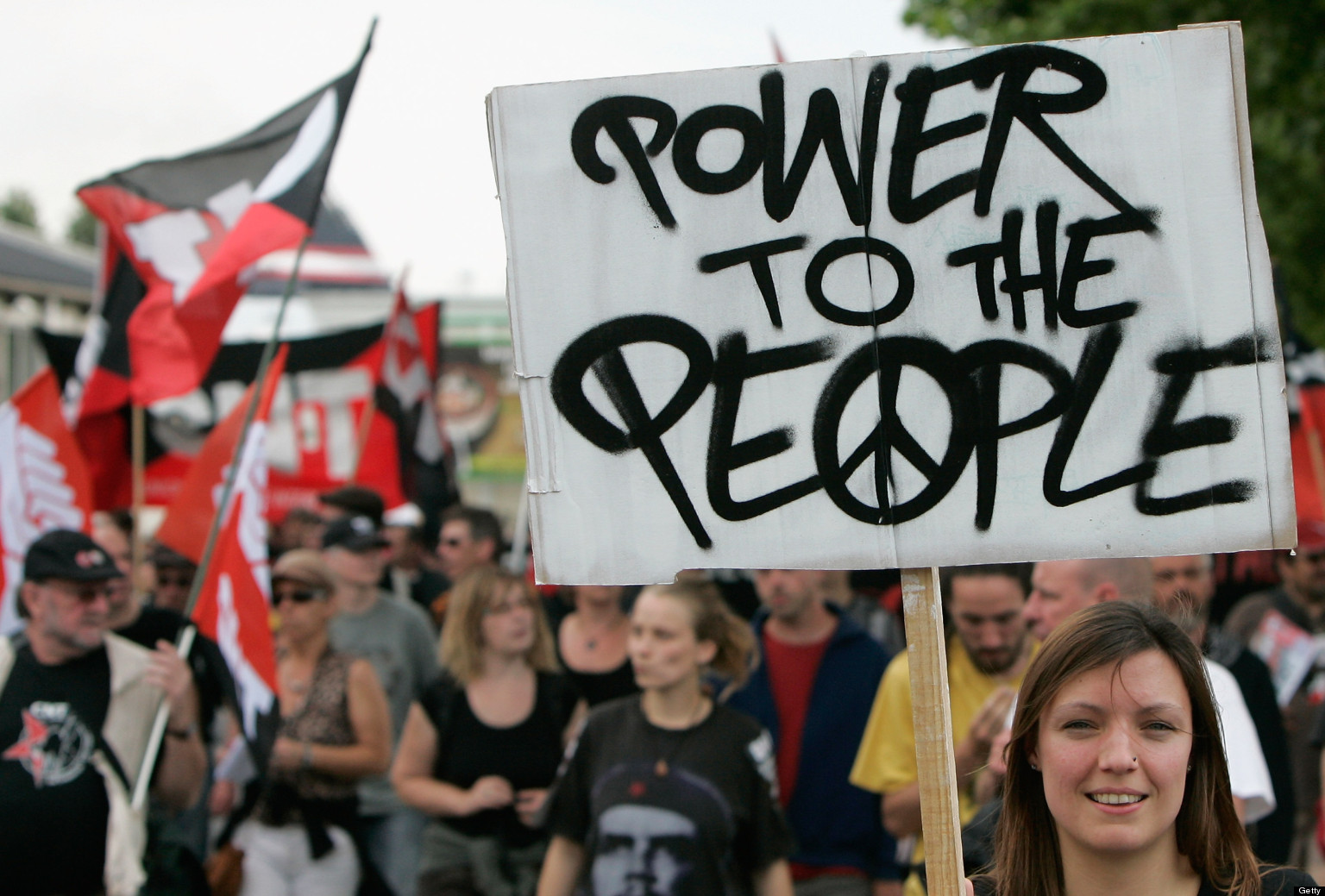It is an emerging, alternative time, made of a combination between the present and the future. People are willing to fight and protest in the present in order to secure a safer and more protected future. Some issues are old, and some new, but each protest has the same underlying factors: people want to be heard and they expect change. There is some deep distrust in the political institutions managing society that emotions are triggered and protests emerge. Moreover, the trigger is anger, while the repressor is fear, and fear is overcome by communication. Protests are used to provoke social change on a small, or even a global scale.
In Manuel Castells’ article, he discusses the beneficial use of networks and technology to advance protests and heighten communication. The technology and morphology of these communication networks, he claims, shape the process of mobilization and social change. People use social media platforms to express their outrage and societal injustice by networking images on the Internet, and inspiring other people to join the protest, which has the potential to become a movement. With these platforms, people are able to shape and mold their protests or movements based on the message naturally evolving. However, there is the fear that their actions will be punished and individuals could seek jail time for their demonstrations. As long as the protest is peaceful and does not necessarily impose on the lifestyles of others, they can engage in such demonstrations, since they have a fundamental right to protest. These days, it seems as though I hear about protests occurring more than they had in my childhood. People are more angry and upset about equality issues and other varying societal issues, and they ultimately become more fearful of their future. Castells proclaims, “It is through togetherness that people overcome fear and discover hope.” In short, people are hopeful that they can change or impact the values of society.
Similar to the article described above, “After Seattle” describes the all-too-common targets for protests and the large discrepancies in power throughout society. Juliette Beck explains the violent and non-violent protests of I.M.F. and World Bank, two very large and powerful organizations that have received scrutiny over the years. She documents an instance where 50,000 people protested the W.T.O. and its stance on global trade. Beck adds that the trade rules are obviously needed, and that the critique was the message of the protest nothing ordinary. Despite the weak message and the limited success of the protest, the organizational methods used to gather thousands of people were no small task. As stated above, technology and social media has helped our generation in organizing and advancing protests or movements, but social media has not been around for long. Protests have occurred for many years, and while gathering 50,000 people in a distinct area may seem daunting, the protestors made it work since they were passionate in what they believed in and passionate about what they sought after. Members look out for each other during protests, as Beck describes, because each demonstration needs medical assistance, legal support, and moral support. Protesting is no easy task, but whether violent or non-violent, people want their voices heard. It might be easy to point out what people want to change in society, but gaging how much people are willing to seek change can be difficult to determine.

Lexi, you bring up a really great point regarding how today’s technology has shaped the realm of protesting. Increased presence of social media and technology amongst today’s generations has made it easier for more people to rally behind causes they feel passionate about. I agree that violent protests aren’t effective, however, if done peacefully they can be extremely impactful and everyone should have the right to fight for a cause they believe in.
LikeLiked by 1 person
Nice post, Lexi! I definitely agree though – protests are occurring more and more often and I definitely do not remember them happening when I was younger, whether that is because I was simply too young to be paying attention to it, because everyone had more faith in each other, or because people were too afraid to do anything about it. Regardless, the internet certainly does serve as a crucial platform of generating greater participation amongst other things especially in society today.
LikeLike
Great post Lexi! I thought you made a great point about technology can help support protests and social movements. One example that I can think of where technology and social media were incredibly helpful in supporting a social movement/protest was during the Arab Spring. Twitter and Facebook were largely used to help gain support for various causes, and I think this can speak to how being interconnected by social media can really help the spread of ideas.
LikeLike